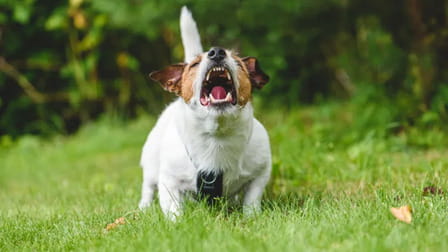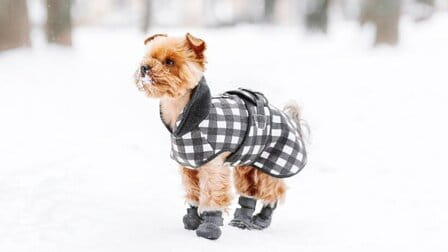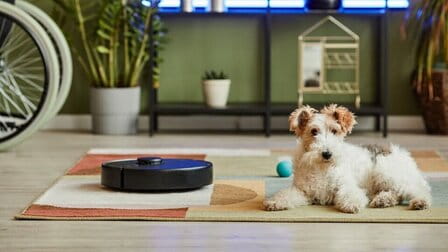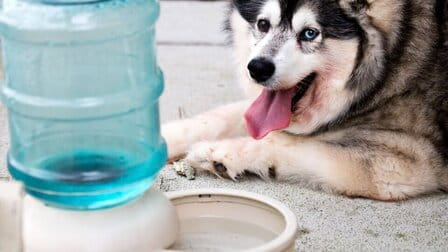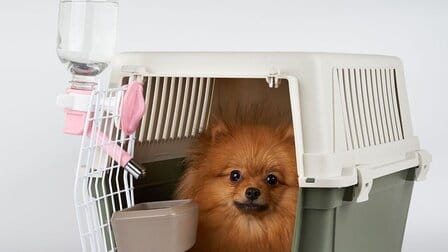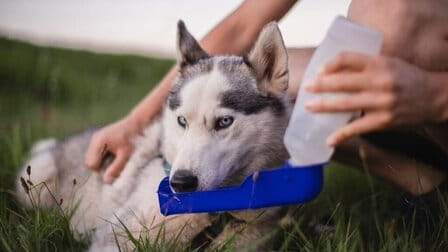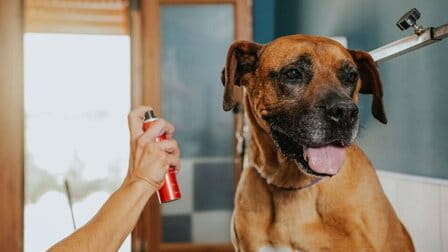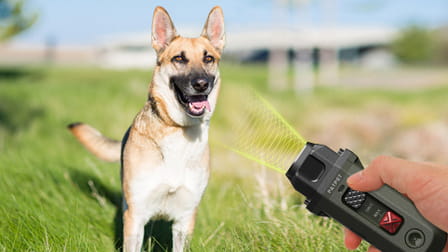You want to take them for a walk or simply want to keep them by your side to avoid any kind of abuse. Investing in collars for dogs will be appropriate, but you need to make sure that the collar will suit your dog's breed and their personality.
If you use the right collar, this makes training your dog safer and more enjoyable. However, at retail stores there is a wide variety of collars for dogs from collars and sturdy harnesses to sliding leash.
As mentioned above, choosing the right collar comes down to a number of factors including safety, trainability, and the shape of your dog's head.
Below the article we have described a list of different types of collars for dogs.
1. Types of collars for dogs
Flat collar for dogs
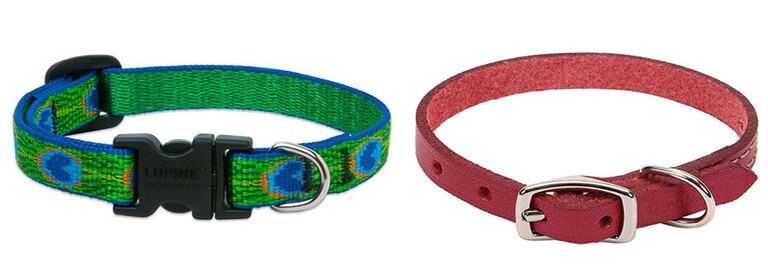
This is a popular collar with a flat collar design, simply because it simply loops around the dog's neck and closes with a plastic clasp. Often this type will come with a D-ring to attach identification tags and important information.
In addition, this type is very suitable for dogs that do not pull while walking. You simply clip onto the leash and direct them towards you. With its lightweight construction, your dog can wear it daily around the neck, as long as it fits snugly.
Besides, the flat collar type is available in different sizes and adjustments as needed. If the dog has a tendency to pull, a flat collar is very helpful.
But they are still damaged like choking and straining the dog's neck to pull forward or change direction, slip off the collar and get out easily.
Excessive pulling with this type of collar can put pressure on their eyes with glaucoma or related eye disease.
It should be noted that it is safe to wear a flat collar for an excitable dog, if in the worst case the dog will get his mouth stuck under the flat collar and suffocate.
Head collars (Head Halters)

Another name for the collar is the head leash, which is useful for keeping the dog focused on walking straight ahead. Often it will slip over the dog's snout and attach behind the ear. This is ideal when training dogs to walk without pulling, this type often redirects the dog's attention, by nature where the head goes, the body follows.
The advantage of a collar or headband is that the dog will learn to walk with a loose leash and be less distracted. So this type of collar can have a calming effect on the dog. Since they are attached to the snout, you may have some trouble guiding it into place at first. There are still some people who use junk food to encourage.
However, when using it be aware that it tends to be prone to rubbing against the dog's facial hair, which can cause irritation. In particular, you should not jerk the dog's head. If the dog suddenly moves at full speed and reaches the end of a taut leash, serious injury here will result.
Dog harness

It is designed to relieve tension on the dog's neck, with a harness that loops around the dog's front legs and closes behind the top of the dog's back.
With just a small operation, your dog can directly step into the harness. Next you should snap it together and clip the leash to the clip located on your chest or back.
If you have a short-nosed dog like a pug or a Boston terrier, this is a great choice as small poodles often have tracheal problems so they can also use a harness around the neck.
Note, you should not stretch your neck to prevent it, because you can pull and push harder. Attach the leash to the front clamp, this allows you to control the direction of your dog's attention. What's more, for greater control, choose a dual-strap harness designed to attach to both the front and rear clamps.
Slip collar for dogs (Choke Chain)
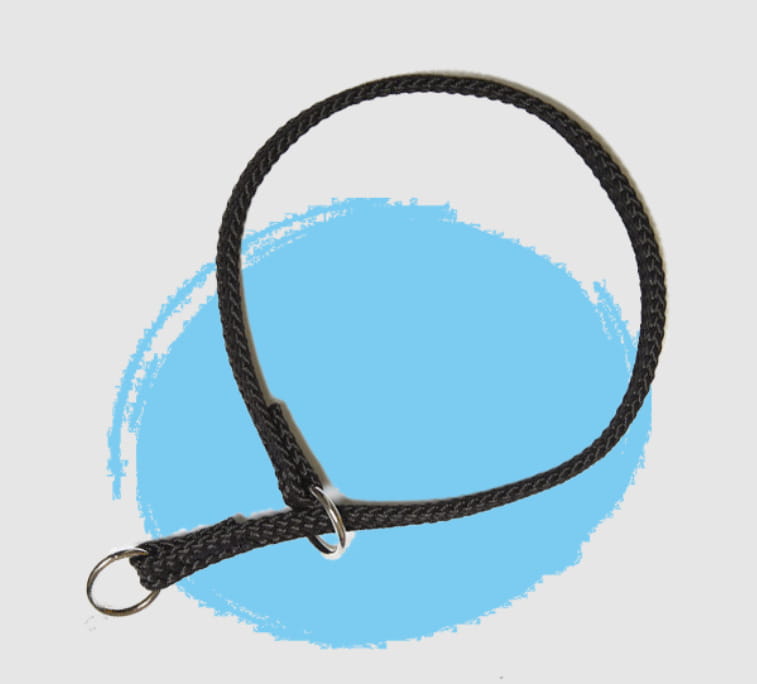
With a sliding neck design or a chain that wraps tightly around the neck, it is very suitable for sledding dogs. The tightening sensation warns the dog to stop lunging and pulling. However, if all kinds of choking collars become a hazard, the sliding design will cause injury to the neck and trachea. But anyway, with professional training, a slip collar can help your dog get around without straining the leash.
Also, slide collars and leashes are used with strong or untrained dogs. Collars of this type prevent the dog from endangering others and provide better control.
Martingale collar for dogs

A combination of a traditional slide and flat collar, this allows you to control the dog without suffocating. It has a two-ring construction that allows the collar to rest comfortably on the dog's neck with no tension.
Once the dog pulls forward, the collar will tighten, but only to a certain extent, otherwise when the dog is relaxed, the collar will loosen.
These collars are perfect for dogs with large necks and small heads such as poodles and terriers. In particular, this breed allows it to easily slip out of other types of necklaces.
Prong collar for dogs (Pinch Collar)

Well suited for demanding dogs or the abusive design causes the dog unnecessary pain and neck injury. Since the prongs or collar clips have metal tips, the rubber can plug in or some can clamp, which is also directly related to the tension on the collar.
Besides, similar necklaces on the market include citronella spray necklaces, which emit steam that can be just as irritating as shock or electronic necklaces which can cause a painful shock.
Standard dog collars

Usually this type of necklace is easy to put on and take off and is especially trendy. These are comfortable for dogs and are not intended for non-sled dogs, and can be taken off the leash or to hold the dog's ID tag.
Even when using a walking accessory like a harness or backpack, you can also wear a necklace to keep your identification. In addition, the collar also provides you with a quick grasp to prevent the dog from catching the bolt, avoiding some unsafe places.
Basic collars for dogs

These are made primarily from nylon or leather and always come with plastic or metal buckles. Besides, they also come in a variety of designs, patterns, and materials. In particular, it can be worn day and night, plus it also has to be a comfortable fit, lower on the neck.
On the other hand, they are also quite cheap on the market, so they can be easily replaced when they are large or the collar is worn.
LED Dog Collar

The LED collar is ideal when you are walking your dog in the early morning or evening or if you are camping or hiking.
This type of necklace provides solid lights or flashing lights as reflective material so that cars or other pedestrians can notice.
On the other hand, some standard nylon collars also have reflective safety bands.
Waterproof dog collar

It is suitable for pets in humid climates and for outdoor activities in the summer. The necklace is made of soft waterproof material, comfortable to wear all the time or on rainy days and activities like water sports.
In addition to being waterproof, they are also resistant to bacteria and easy to clean. Plus, the construction is very durable and you don't need to wash or replace it as often.
However, they also have very limited resistance to pulling or training equipment, or use these collars as standard collars.
Bark collar for dogs (Shock-Free)

This type is also very popular now, they have more functions than ordinary necklaces. At the same time, they are mainly used to correct inappropriate barking. And this collar also does not control the sensors located close to the dog's neck to detect barking and movement from the vocal cords. This you can control the collar from afar and is used for behaviors other than inappropriate barking. This type also has a lot of variations.
For spray collars are known to be the most invasive and irritating of the three but are effective on dogs that bark a lot. At the same time, you should also spray citronella that is unscented or has a strong smell to attract the dog's attention.
Vibrating collars and ultrasonic will work the same, instead of spraying, they will vibrate gently like a phone vibrate or a sound a dog can hear.
However, they still pose a danger to small dogs, as they can get too tight and cause uncomfortable, chapped prongs in the long run. The advice for you is to find the right size necklace to work effectively.
In general, bark collars for dogs and remote collars are designed to provide a comfortable or effective fit for dogs under 8 lbs or with extremely thin necks. They're mainly used when dogs are home alone, so you can also follow verbal commands or distract your dog with activities, and don't need a collar. Plus, these necklaces are also lightweight.
Shock collar for dogs

The name may sound a bit cruel, but this is an effective training collar for serious cases. Shock-resistant collars will be made like remote-controlled or bark-control collars, differing in that they have prongs that stick to the dog's neck. And these connection points will detect the movement of the vocal cords in the non-remote-controlled collar and this also generates electrical pulses through the buttons for easy adjustment.
Conclusion
Finding the right collar for dogs will take a lot of time and money and a well-trained dog will require a flat collar or harness. Also comes with a collar or head leash if your dog needs a lot of control when you walk them.
If you are caring for a difficult dog with the help of a trainer, a slip collar or severe case, with prongs, aerosol or an electronic collar can be used.
At the same time, you also need to consider the dog's body condition and health. While collars don't give you much control, they limit neck injuries and prevent eye pressure problems. We hope that after reading this article, you can find and buy a suitable collar for your dog.

